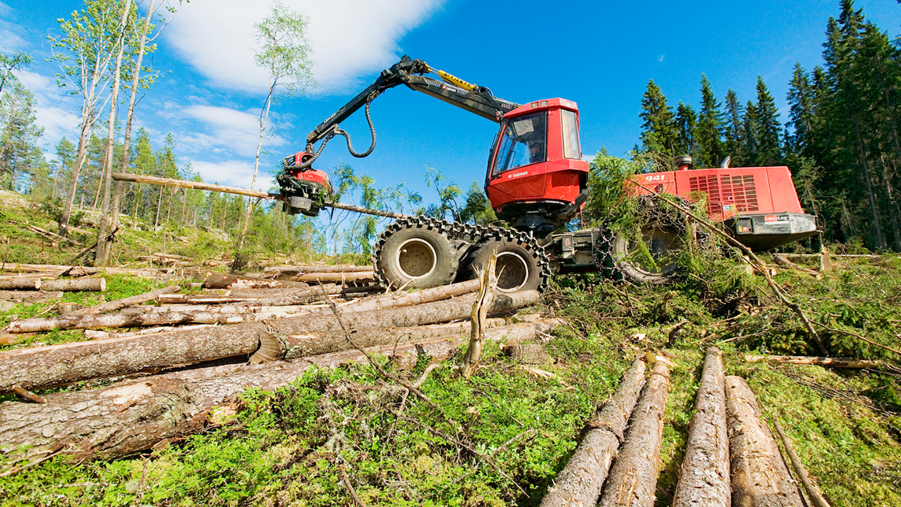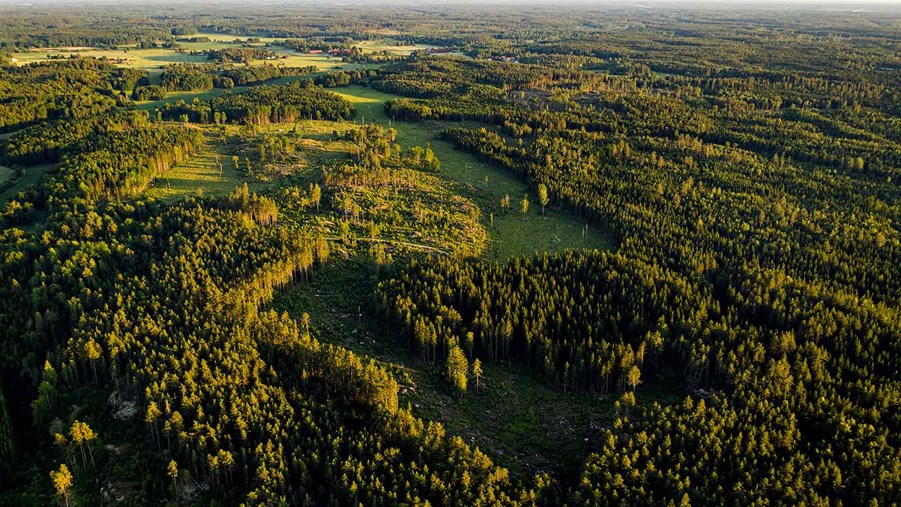
In Sweden, the forest owner is free to choose how to manage the forest, within the frameworks established by legislation. So why do many forest owners choose to apply clearcuts with tree retention?
Mainly because it suits the ecological structure of boreal forests. Regeneration benefits from the disturbances in the soil. Clearcutting is the most effective method to produce more wood, while also improving regrowth of trees after harvest.
Historically, clearcutting became the standard method in Sweden for both productivity and environmental reasons. In the 1950’s, there was criticism against forest degradation caused by selective dimension cutting. The new scientific method of clearcutting resolved many environmental problems that forestry faced then and still faces in other parts of the world.
What measures are taken to protect biodiversity?
The Swedish forest-based industry aims to manage the forests in such a way that all naturally occurring species can survive in the forest landscape. As clearcutting can have a negative impact on certain species, comprehensive nature consideration is taken at different levels in the forest landscape. This requires detailed knowledge about the local conditions. The retention of, for example, dead wood, groups of trees and high stumps on the logging site, combined with the areas voluntarily set aside by forest owners and formally protected by the state, forms the basis for the preservation of biodiversity in managed forests.
And it is working. The amount of deadwood and the share of deciduous trees has increased. The conditions have improved for flora and fauna that prefer open, sun-exposed habitats.
Also, the disturbance is more focused to one area of the forest and only reoccurs with long time intervals.
However, it is still important to continue the nature conservation efforts, to assess their effects on the entire forest landscape and minimize damage and mistakes through continuous efforts to improve quality. It is also important to continue research on the effects of current nature considerations on the survival, spread and recolonization of species, and to improve methods for evaluating biodiversity in managed forests.
Are there any other forms of forest management beyond clearcuts with tree retention?
Different forest owners have different objectives and goals for their forests. Continuous cover forestry, without clearcuts, can for example be applied to maintain or enhance recreational values close to residential areas, to preserve biotopes with epiphytic lichens that are important for reindeer husbandry, or to favor certain types of mycorrhizal fungi.
We are curious and keen to learn more about continuous cover forestry. There is limited research in this field, but the general picture at present is that continuous cover forestry results in lower wood production and a lower level of carbon capture. Several aspects need to be considered when deciding on the ideal method for each individual forest area as the prerequisites for forest management vary between different parts of the country.
Do clearcuts release carbon?
Sustainable forest management, as practiced in Sweden, has had a strongly positive climate impact over the past 30 years. Today, the forest-based sector offsets Sweden’s entire territorial emissions – twice over.
In the intensive debate around forests and climate it is sometimes suggested that carbon should be kept in the forest instead of harvesting wood, as we don’t have time to wait for the forest to grow back. One argument to support the claim is the notion that clearcuts release carbon into the atmosphere, creating a negative climate effect in the short term.
However, this claim is not valid. The clearcutting itself does not increase carbon emissions. The short-term negative emissions are rather the result of slower forest growth in the early stages after harvest. This effect is the same whether the harvest is done as a clear-cut or with continuous cover forestry. However, the carbon sink in Sweden is continuously increasing at landscape level, mainly through higher growth and the reduced occurrence of forest fires.

